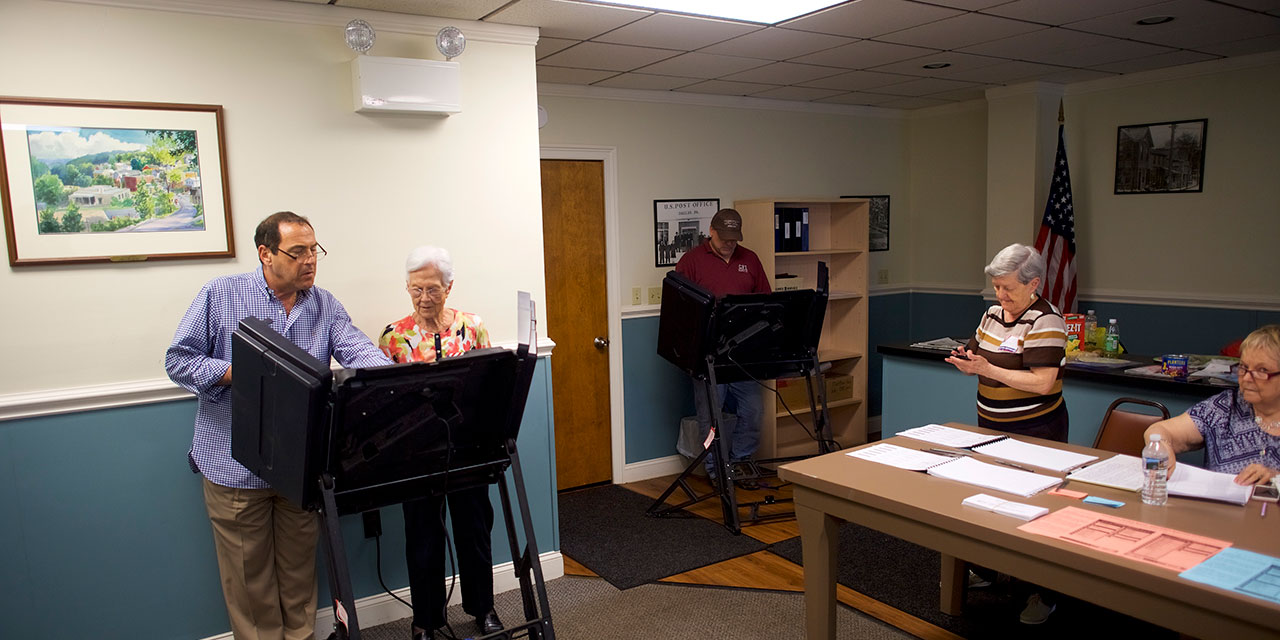Democratic electoral gains last week in Kentucky and Virginia—in part, a punitive response among suburban voters who dislike Donald Trump—are said to foreshadow a devastating 2020 for Republicans. This conclusion probably overstates the case. In Kentucky, suburban voters supported down-ballot Republican candidates while rejecting Matt Bevin, a deeply unpopular GOP governor. In Virginia, Democrats gained control of the General Assembly, an inevitable political shift, as metro Washington’s Fairfax, Loudon, and Prince William counties have undergone a sustained demographic transformation.
Democratic gains may not be all that they’re cracked up to be because the two parties are essentially trading places. Democrats increasingly control suburban votes, while Republicans are winning traditional Democratic strongholds in blue-collar areas. This dynamic complicates analysis of the 2020 electoral map—and Pennsylvania, a traditional battleground state, offers a vivid example.
In suburban Philadelphia, Democrats have erased generations of Republican dominance. In Chester County, where Republicans retain a slight voter-registration edge, Democrats won control of the courthouse for the first time in its three centuries of existence. The party swept all nine countywide elections—from county commissioners and district attorney to court judge and recorder of deeds—and the majority of municipal races, including precincts in GOP strongholds. In neighboring Delaware County, Democrats won control of the county council, stripping Republicans of a 150-year streak of one-party rule. Meantime, voters in Bucks County—long a bellwether in presidential races—ended Republicans’ nearly 40-year majority on the board of commissioners. And in Montgomery County—once hailed by Ronald Reagan as one of the nation’s top three winningest GOP counties—Democratic commissioners maintained their majority.
The suburban revolt in these Philadelphia “collar counties” recalls an earlier chapter in regional history. In 1951, Joseph Clark, a patrician reformer, became the first Democrat since 1884 to win Philadelphia’s mayoral race. Though Republicans never recovered from the loss, they built and sustained a seemingly unbreakable political apparatus in the city’s suburbs. Years of rising crime and industrial decline pushed working- and middle-class families into inner-ring boroughs and townships, where they maintained an allegiance to the GOP. Republicans looked to suburban courthouses as farm teams for higher-office candidates in Harrisburg or Washington.
Over time, though, population growth, demographic change, and sprawling development brought in masses of upper-middle-class swing voters, who increasingly split tickets or trended Democratic. And while Trump barely lost Bucks County in 2016—a forgotten factor in his statewide victory—his presidency has accelerated Democrats’ success throughout Greater Philadelphia. As Patrick O’Donnell, a former Democratic commissioner in Chester County, told the Daily Local News: “We probably would have gotten here in the next six to 10 years, but [Trump] just speeded that up.” Last Tuesday marked the third election cycle since Trump’s inauguration that Democrats accumulated suburban wins, from county-based congressional districts to Lower Makefield’s township supervisors’ office.
Beyond Philadelphia’s suburbs, Pennsylvania presents a complicated electoral canvas, making it difficult to gauge the state’s political future. It’s true that Democrats’ electoral bounty also grew in places like Lehigh and Monroe Counties, but Lehigh is home to Allentown—the state’s third-largest city, with a majority Latino population—and Monroe is now a major commuter hub for metro New York. Republicans switched party control in even more counties than Democrats. In southwestern Pennsylvania, for example, Republicans flipped commissioner control in Armstrong, Westmoreland, Greene, and Washington—all counties that overwhelmingly voted for Trump in 2016. And in the northeast’s populous Luzerne County, home to Wilkes-Barre and Hazleton, Republicans won the majority of council seats.
If anything, last week’s election shows that Pennsylvania is a microcosm of America’s intensifying cultural and economic divide. In prosperous suburbs outside Philadelphia, Pittsburgh, Harrisburg, and Allentown, upper-middle-class voters are more insulated from the social and economic concerns driving the state’s struggling communities and are voting Democratic. In Pennsylvania’s poorer cities and towns, decades of economic stress have produced anger and despair. Since 2016, these regions, traditionally Democratic, have elected more Republicans to office; next year, they will likely vote for Trump.
Looking ahead to 2020, Democrats shouldn’t count on suburban voters overcoming Trump’s victory margin in a county such as Luzerne. And suburban voters might defect from the Democrats if party leaders oppose companies that bring jobs to regional economies or, in the case of Delaware County, the new district attorney enforces a decriminalization agenda. As for Republicans, they delude themselves if they dismiss the importance of Trump fatigue, a factor affecting even the president’s ardent supporters. Even if Trump prevails next year, Republicans could find themselves in a similar position to Democrats under Obama in 2012: victorious at the top but broken everywhere else.
Photo by Mark Makela/Getty Images




